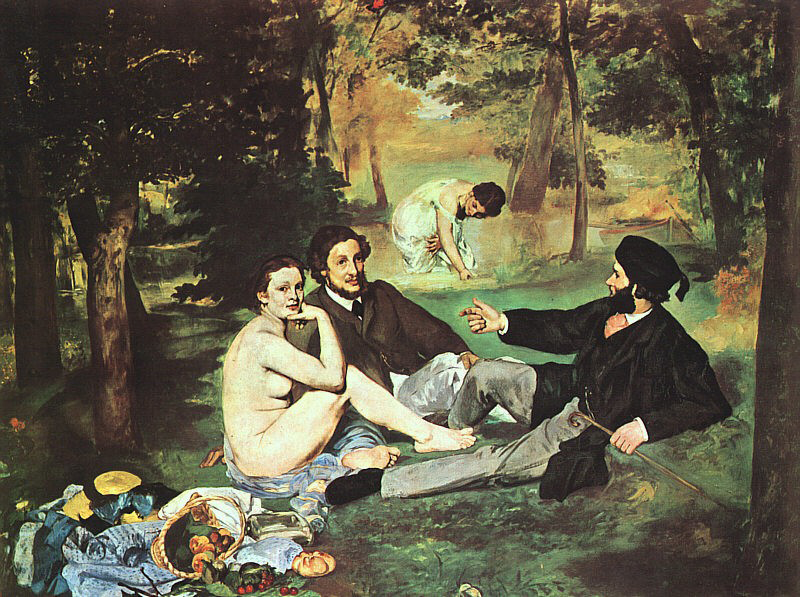Smokin Good!!

Smoked meats are fantastic!!! And smokin ‘em is something we can do ourselves. You could build a smokehouse in your backyard for $27,500. Or get the awesome Meadow Creek TS250 Barbeque Smoker Trailer (second photo down) for only $7,195. See that baby HERE. But most of us will opt for a less expensive option providing the same results. Check out all the smoker options, meat options, helpful tips, a couple of great recipes and some great smokin music in the story below. Haaaaaaaaaappy Smokin!!!
Now that the mercury is starting to climb, it’s time once again for me to revisit an interest I can’t quite stop thinking about when in the backyard – smoking meats. Now, for sure I am no expert at all – just a lover of things that come off the grill (and all the other items that fill my plate). There is no doubt, a good piece of smoked meat is a work of art — it takes time, talent, and know-how to get it right. Even if my fellow “smokers” disagree on the finer points, I’m confident we all agree on one thing: smoked meat is freaking awesome. To get things started, I searched the internet for some good “basics” on meat and equipment, and then included some of my favorite recipes… (honestly, is there anything better than juicy smoked and barbequed ribs?? (ok, brisket is right up there). Be sure to check out the links below for additional info – crank up your grills and have fun. And if you happen to hit the jackpot on a favorite recipe, be sure to send it over for me to try (skowalski@khtheat.com ). As I am writing this all I can think of is ribs with some of Jackie’s great potato salad! (which will be for a whole other post). Thanks to Wikipedia, themanual.com, heygrillhey.com, thefoodnetwork.com, youtube.com.
- Smoking has been used as a way of preserving and flavoring food for many thousands of years. Our ancestors discovered, probably by serendipity, that foods exposed to smoke lasted longer before spoiling.
- Smoking processes and methods have been passed down through generations and are still very much in use today around the world. In some countries, these time-honored techniques form part of the essential yearly ritual of preserving fish and meat, especially in autumn to provide protein over the winter when hunting proves less bountiful.
- In Medieval Europe, when an animal was slaughtered (often pigs) much of the meat was smoked for preservation. Many smallholdings had dedicated smoke houses where the meat was smoked and stored. The less affluent hung their meat high up on the edges oftheir hearth or fireplace at night. Ashes were placed over the embers to extinguish any flames which produced an ideal Smoky environment in which to preserve their fish or game.
- Through years of culinary trial and error, humanity has determined the best smoking techniques and, in the process, elevated the age-old practice to a level of mastery on par with any other cooking endeavor.
- There are entire books written on the subject, but contrary to popular belief, it doesn’t take years to learn how to smoke. Here’s some information you need to know to dive right in and start smoking meat like pro within a day. First things first, though; you’ll need a smoker.
Types of Smokers
- Electric smokers use electricity to heat up a rod (or similar heating element), which then causes the wood to smoke. These are the easiest in terms of heat control since all you have to do is turn a dial to adjust the temperature. They also tend to be the most expensive, and they impart the least amount of smoked flavor compared to the other options.
- Propane smokers work almost exactly like electric smokers, but use a gas-fueled flame instead of a heating element to make the wood pellets smolder. These are pretty simple and might be a better choice for people in areas where electricity is expensive or scarce.
- Charcoal smokers are a favorite among barbecue masters, who believe that charcoal imbues more flavor compared to propane and electric. Charcoal smokers tend to be cheaper, but you also have to buy charcoal every time you want to smoke. Charcoal also requires you to start and maintain a fire without the help of modern technology.
- Wood smokers are definitely the way to go for the purest flavor, but they require the most attention and care out of all the options because they’re harder to keep at a constant temperature. For this reason, I would recommend wood smokers after you’ve learned the basics.
- Pellet smokers are similar to wood smokers, but the wood has been condensed into a convenient pellet form (hence the name). However, they are much easier to use. Instead of splitting firewood, stacking it, and babysitting the flame, you simply load the pellets into an oven-like compartment. The only downside? Like their electric brethren, pellet smokers tend to be expensive.
- Combos – more serious cook/chefs like to buy combination gas grills and smokers – this can get expensive, but down the road may be the best option for you to truly enjoy the art of outdoor cooking.
Best Meats to Smok
When hunting for the right chunk of meat, try to pick something that will benefit from the slow-cooking process. Don’t shy away from cuts with lots of connective tissue and fat known as “marbling.” A generous marble will make the finished product more succulent and delicious.
- Beef brisket is a go-to and great “starter” meat, and you can never go wrong with ribs.
- Pork shoulder is another meat that lends itself to smoking.
- If you want to smoke a steak, the bigger the cut, the better.
- You might also turn to your butcher shop for some lesser-known cuts like tri-tip and chuck eye, just to see what happens. Who knows, you may fall in love with a new cut of meat.
Wood For Smoking Meat
This is the flavor engine, along with your rubs and sauces. Experimenting is big part of the fun, so try different woods and wood combinations – nice excuse to keep cooking too!
- Alder has a light and naturally sweet flavor, which makes it great for pairing with fish, poultry, and any white meat.
- Applewood has a fruity and sweet smoke that pairs wonderfully with pork, fish, and poultry.
- Hickory has a strong and distinct flavor that’s ideal for red meat, especially ribs.
- Pecan gives your meat somewhat of a fruity flavor and burns cooler than most other barbecue woods. It’s similar to hickory and is best used on large cuts like brisket and pork roast, but can also be used to complement chops, fish, and poultry.
- Maple has a sweet and delicate taste and tends to darken whatever meat you’re smoking. It goes well with alder, oak, or applewood, and is typically used for poultry and ham.
- Mesquite is undoubtedly the most pungent wood you can smoke, which means it can easily overpower your meat if used improperly. Avoid using mesquite with larger cuts that require longer cooking times. You can also use it with a mix of other woods.
- Oak on the other hand, is great for big cuts of meat that take a long time to cook. It has a subtle flavor that will emerge the longer the meat is in the smoker.
- Cherrywood is best suited for red meat and pork; it also pairs well with alder, hickory, and oak.
The Importance of Brining
Brining your meat keeps it from drying out during the smoking process. It’s all about science — the salt in the brine makes the proteins in the meat more water-absorbent. When sodium and chloride ions get into the meat tissue, their electrical charges mess with the proteins (especially myosin), so they can hold onto moisture more effectively and lose less of it during the cooking process. For optimal moisture retention, soak your meat in a brine for 10-12 hours before smoking.
In its most basic form, brine is nothing more than salty water, however, it benefits from the addition of herbs and spices. To make a good base, add three tablespoons of salt to one quart of water, then throw in whatever else you prefer. Brining is a bit of a double-edged sword: It helps meat retain moisture but also makes it saltier. Some chefs use sugar and molasses to combat the salty flavor.
Keep it Low and Slow:
Low and slow is the key to good meat. Keep your temperature between 212 degrees Fahrenheit and 230 degrees Fahrenheit for the best results. These lower temperatures generally won’t cause the meat’s cell walls to burst, which helps make the meat more succulent and allows it to retain nutrients.
Yummy Recipes:
Texas Style Smoked Beef Brisket: CLICK
“Oh Baby” Baby Backed Ribs: CLICK
Songs to Smoke Meat To:
You Tube Favorites: CLICK




